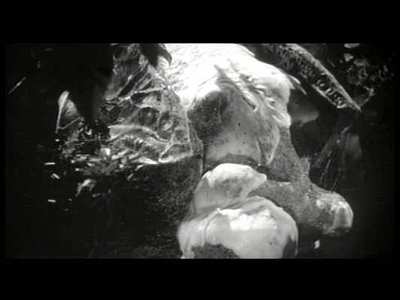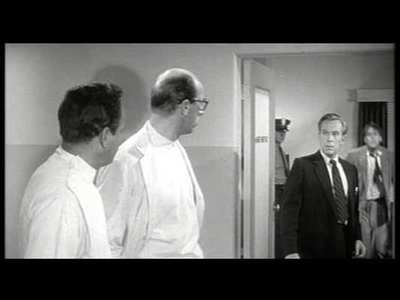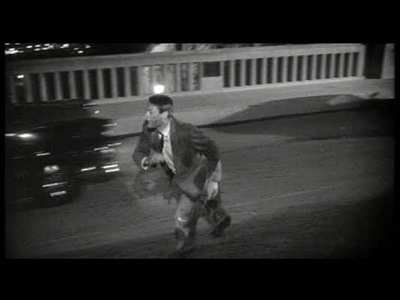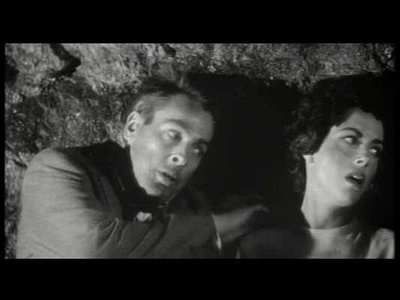Review of Invasion Of The Body Snatchers
Introduction
Don Siegel`s 1956 horror classic The Invasion Of The Body Snatchers is possibly the key example of the 1950s vogue for paranoiac sci-fi. Although the director refutes any such connection, many commentators believe that the film is an allegory, with the "pod people" substitutes for either Communists or McCarthyites. The movie has been remade three times (1978, 1993 and 2007), but none of the remakes has the sweaty-palm creepiness of the original.
The film was made in was the depths of the Cold War, so parallels with the "Commie Threat from Within" were easy to draw. The movie was made only two years after the end of Senator Joseph McCarthy`s crusade against Communism through the House of UnAmerican Activities Committee which had seen Hollywood tearing itself apart as moviemakers were denounced or denounced their fellow artists in a witch-hunt that lasted seven years. It was only three years after Julius and Ethel Rosenberg had been executed for their part in passing secrets of the Atom bomb to the Soviet Union, and of course the new bogeyman on the block was Uncle Joe Stalin.
Kevin McCarthy stars as Dr Miles J Bennell, a small town doctor rounded up as a loony by the sheriff`s department for claiming that alien beings are invading the planet. He recounts to the doctor from the State mental facility the tale that got him picked up.
It has only been a matter of days since he returned to Santa Mira, the sleepy little community where he is the local doctor, to find a number of the locals in a state of hysteria that loved ones are impostors. The claims subsided as quickly as they sprang up, and initially Bennell was reassured that the cases were an epidemic of mass hysteria. Further investigations, however, proved that something was going on - that citizens of the community were being replaced by replicas formed from alien seed pods.
Siegel`s original cut of the movie was not bookended with the scenes at the hospital, but ended on the highway with Bennell`s frantic attempts to get passing motorists to help. Poor preview screenings led to the decision to effectively change the end of the movie completely.
Kevin McCarthy, for whom this movie was a key career point, frequently cameos in movies riffing on his appearance as Dr Bennell. You can spot him in the Looney Tunes Back In Action movie in the Area 52 sequence carrying a pod just like the ones in Body Snatchers, and still insisting that "You`re Next!" The actor is a good luck charm for director Joe Dante (a lifelong fan of the movie).
Director Don Siegel never made another sci-fi movie in his career, moving on to hard-nosed thrillers and a very profitable partnership with Clint Eastwood, making a number of the actor`s best non-Western movies including Coogan`s Bluff and Dirty Harry.

Video
Oh the humanity! I seldom wish that a studio hadn`t bothered with a release, but in the case of Invasion Of The Body Snatchers, I`ll make an exception. Time has not been kind, and neither has the complicated ownership history of the movie. I won`t go into details (as I have difficulty following it myself), but suffice to say it has not been conducive to the survival of the movie. The movie has not been restored, and would appear to have been sourced from a poor quality print, at least a few generations down.
The movie is presented as 2:1 letterboxed within a 4:3 frame, no anamorphic enhancement, so that on a standard tv you`re watching it with black bars. On a widescreen tv, you`re watching it either with black bars on all sides or zoomed in so that it fills the screen, but with only half the potential resolution. The image is very soft and lacking in detail, and contrast is distinctly higher than it should be.
The movie was originally composed for a 4:3 frame, but the studio insisted it should be released in "Superscope", which cocked-up cinematographer Ellsworth Fredericks` composition and which means that given the movie is only available in its Superscope form, it can no longer be viewed in its original version.
Superscope was a system where the movie was shot using plain spherical lenses, exposing the whole 35mm negative including the area reserved for the optical soundtrack. The process survives to this day under the name "Super35", and is a favourite of Peter Jackson and James Cameron. In printing, the negative is letterboxed to a ratio of 2:1, discarding the picture information above and below, then the image is anamorphically squeezed in producing the master negative the prints will be struck from. It sounds involved, but it meant that a movie could be shot with a bog-standard camera, lenses and lighting rather than the expensive and technically complicated CinemaScope kit.

Audio
Plain vanilla mono reproduced through Dolby 2.0

Features
The Colorized® version carries a copyright date of 1988 and ownership by Republic Pictures (God knows how they got hold of it), and is therefore produced with 1988 technology. Needless to say, it looks really rough. The Colorized print is also a 4:3 pan and scan of the Superscope print, so the framing looks even worse. We should be thankful for subtitles for the hard of hearing, but there is little else to be thankful for. The opportunity for a retrospective documentary or even a yak track by surviving cast and crew would have been welcome, but the inclusion of the Colorized version just isn`t trying, and to fans and serious students of the genre is something of a slap in the face.

Conclusion
An enormous disappointment of a disc. A classic sci-fi/horror picture from a highly regarded director, treated with disregard verging on disdain. Maybe the pod people are running Universal UK. That would explain a lot. Maybe the decent film elements were unavailable to Universal (theoretically Warner Bros should have them in the US). Who knows?
Your Opinions and Comments
Be the first to post a comment!